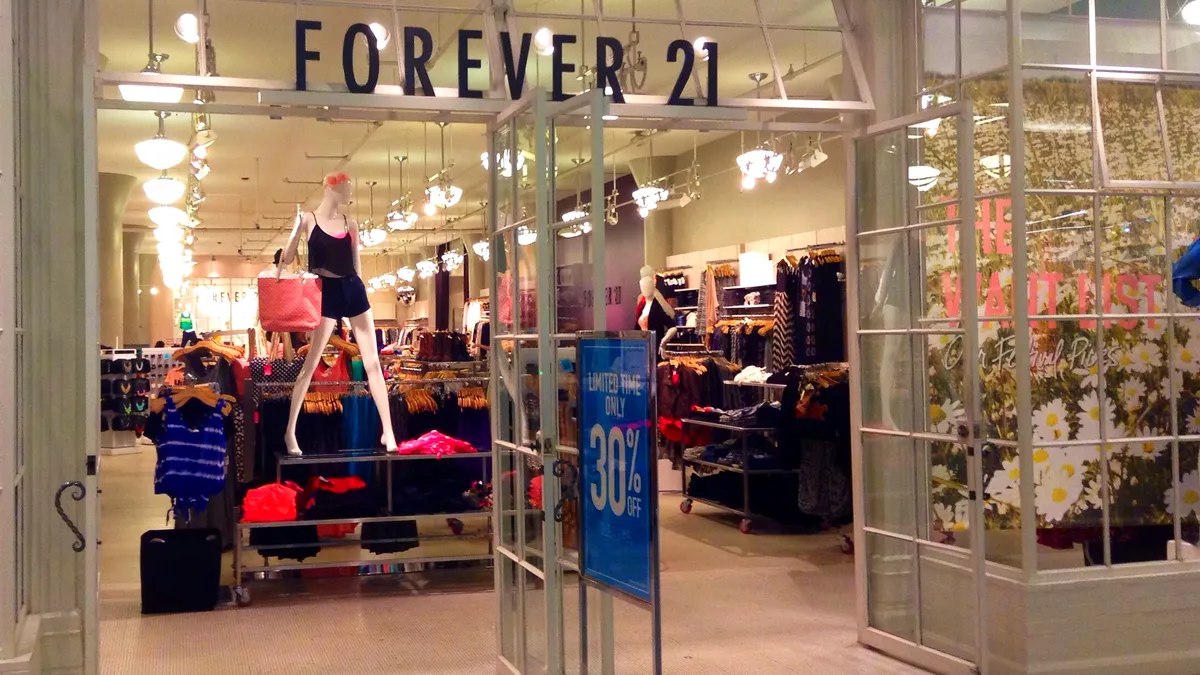Nordstrom is quitting Trunk Club.
The department store has tried to make the apparel subscription service work since acquiring it in 2014 for $350 million — tweaking its fee structure, shortening its return window and adding women's. But it's been bumpy almost from the start. The company took a $197 million write-down on the service three years after buying it, forcing a $10 million third quarter net loss. Last year, Nordstrom stopped dedicating styists to Trunk Club, enlisting its regular full-line stylists to work with those customers instead.
Apparently, none of that was enough to salvage the operation. Last week, CEO Erik Nordstrom told analysts that Trunk Club is done, surprising few observers.
"Nordstrom has always struggled with Trunk Club. The acquisition made sense at the time because Nordstrom wanted to showcase its credentials in personalizing fashion," GlobalData Managing Director Neil Saunders said by email. "However, they never really managed to make the business profitable and it always remained something of a poor relation compared to the department store and off-price business."
"I want to be clear. This move reflects our belief and commitment to styling and we are dedicated to growing and investing in these services."

Erik Nordstrom
CEO, Nordstrom
Yet, personalizing fashion does remain in focus at Nordstrom. While the box service has struggled, stylists have been proving their worth. Customers engaging with a stylist, online or in a store, spend seven times more and report higher levels of satisfaction, Erik Nordstrom said. As a result, the company is investing more in that side of the business, which ranges from what Nordstrom called "low-touch outfit inspiration through our digital channels to a high-touch and personalized relationship with a stylist."
"As we position our styling program for further growth, we are sunsetting Trunk Club and redirecting our resources to the services that our customers tell us they value most," he said. "I want to be clear. This move reflects our belief and commitment to styling and we are dedicated to growing and investing in these services."
What's in the box
Nordstrom joins ThredUp in giving up on the apparel box idea, which leverages data gleaned from style quizzes, purchases, returns, customer feedback and interactions with human stylists, along with some decision-making by the stylists themselves. At Stitch Fix and elsewhere, deliveries and returns are free.
Because it requires signups and a styling fee (credited to any purchase), with company-selected items sent by box, it's known as a "subscription," although Trunk Club, Stitch Fix and others allow for occasional deliveries rather than regular ones. Even with such flexibility, the approach is problematic in terms of cost to the retailer and the experience for the customer, according to Jeffrey Sward, founding partner and CEO at Merchandising Metrics.
"On the cost side, it turns out that, after massive amounts of time, energy and money spent trying to make these business models viable, the math simply does not work for these businesses," he said by email. “'Free' and 'convenient' have become the most expensive words in retail. Subscription models thought the fee would make it all work. Nope."
“On the cost side, it turns out that, after massive amounts of time, energy and money spent trying to make these business models viable, the math simply does not work for these businesses."

Jeffrey Sward
Founding partner & CEO, Merchandising Metrics
Nordstrom dumping Trunk Club but investing further in its styling services also shows how important people are to apparel selling, according to Sward.
"On the customer experience side, it turns out that human interaction is huge," he said. "Customers want to engage with a stylist, not an algorithm. Of course algorithms can be great tools, but artful selling is still an emotional process. And 'emotional algorithm' sounds like a great example of an oxymoron to me."
The box-styling setup is also high risk to a retailer's reputation because it purports to be highly personalized — thanks to sophisticated algorithms plus the human touch — and therefore carries higher expectations than the data-fueled recommendations shoppers encounter when browsing online, according to Kirsten Allegri Williams, chief marketing officer at Optimizely.
"If a customer decides to opt for a subscription box and is unhappy with the result, there’s a severe disconnect between the brand and the consumer," she said by email. "The consumer may have previously believed the brand had quality clothes and understood their style. Upon opening a subscription box, brand loyalty can change in a second."
In or out?
If Nordstrom, with a strong tech game and over a century of fashion retail experience, can't make subscriptions work, can anyone? Even Stitch Fix hedged its bets last year by opening a traditional retail site.
The timing of such moves is probably good, with consumers less open to added expenditures like styling fees on top of higher gas and food prices, according to Saunders.
"Arguably, the decision could have been made sooner, as it was somewhat clear that the service wasn’t really going anywhere, but Nordstrom may have been fine for it to just tick along when the business was operating smoothly," he said. "Things have changed now though, and Nordstrom needs to be more disciplined and focused in its activities."
Longer term, algorithms, which play such a key role in this business format, simply aren't capable of adequately determining what a customer wants, at least when it comes to apparel, experts said.
"Even within a known brand, where on the spectrum of fashion does the customer want to be in a given wearing moment?" Sward said. "Skew to basics and key items, or skew to trendy and fashion? A stylist can determine that pretty quickly, and maybe an algorithm could too, given enough time and data and mistakes and aggravation. Not what the customer is looking for these days."
"Upon opening a subscription box, brand loyalty can change in a second."

Kirsten Allegri Williams
Chief Marketing Officer, Optimizely
Still, it's been worth a try, and experimentation in general is crucial for the industry, according to Williams.
"If retailers experimented more frequently across the entire digital customer experience, they would be shocked at the ROI, increase in sales and the loyalty that can be built among customers and realized as a company," she said. “Subscription boxes may not work with the level of sophistication retailers are currently able to enact with their algorithms, but it may be a stepping stone into the next big strategy from retail."
Meanwhile, Trunk Club's demise could be an opportunity for rivals.
"The exit does leave room for other players, like Stitch Fix, to take some share," Saunders said. "However, a lot of the fashion services seem to be struggling and the whole business model has a lot it needs to prove."






















